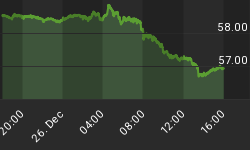We're late in posting this free page this morning, so we will apologize with a Special Chart, updated as of 10:30 AM this morning.
This chart is part of a Multi-Indicator Model that we post on our paid website every day. There are actually 5 Indicators on the chart, and we will show two of them this morning.
The chart below compares the market action of the New York Stock Exchange Index to the trend of the Declining Volume on the NYSE, and a C-RSI (Relative Strength) on the NYSE.
At the top of the chart is the NYSE's trend of Declining Volume. Its action moves opposite to the market, so we inverted it so that it tracks directly with the NYSE without being confusing.
The second graph is a zero based RSI (Relative Strength Index) of the NYSE. (Pay particular attention to the blue C-RSI line.)
How they work with the NYSE Index is fairly straight forward ...
1. If both are above zero and trending up, then the NYSE and the market trends higher.
2. If both are trending below zero and trending down, then the NYSE and the market trends lower.
What if they don't both move in unison together?
3. However, if the Inverted NYSE Declining Volume is above zero and trending up, BUT the C-RSI is negative with a down trend ... then the market moves sideways in a trading range.
So, what was it saying as of 10:30 AM on Friday morning?
Well, the Inverted NYSE Declining Volume was positive, but the C-RSI was negative, so that mixed condition is the prescription for a sideways trading range. The only difference from sideways range in August is the amount of Volatility on the VIX which is giving us a wider up and down range. (This chart is updated daily on our paid subscriber site.)

















